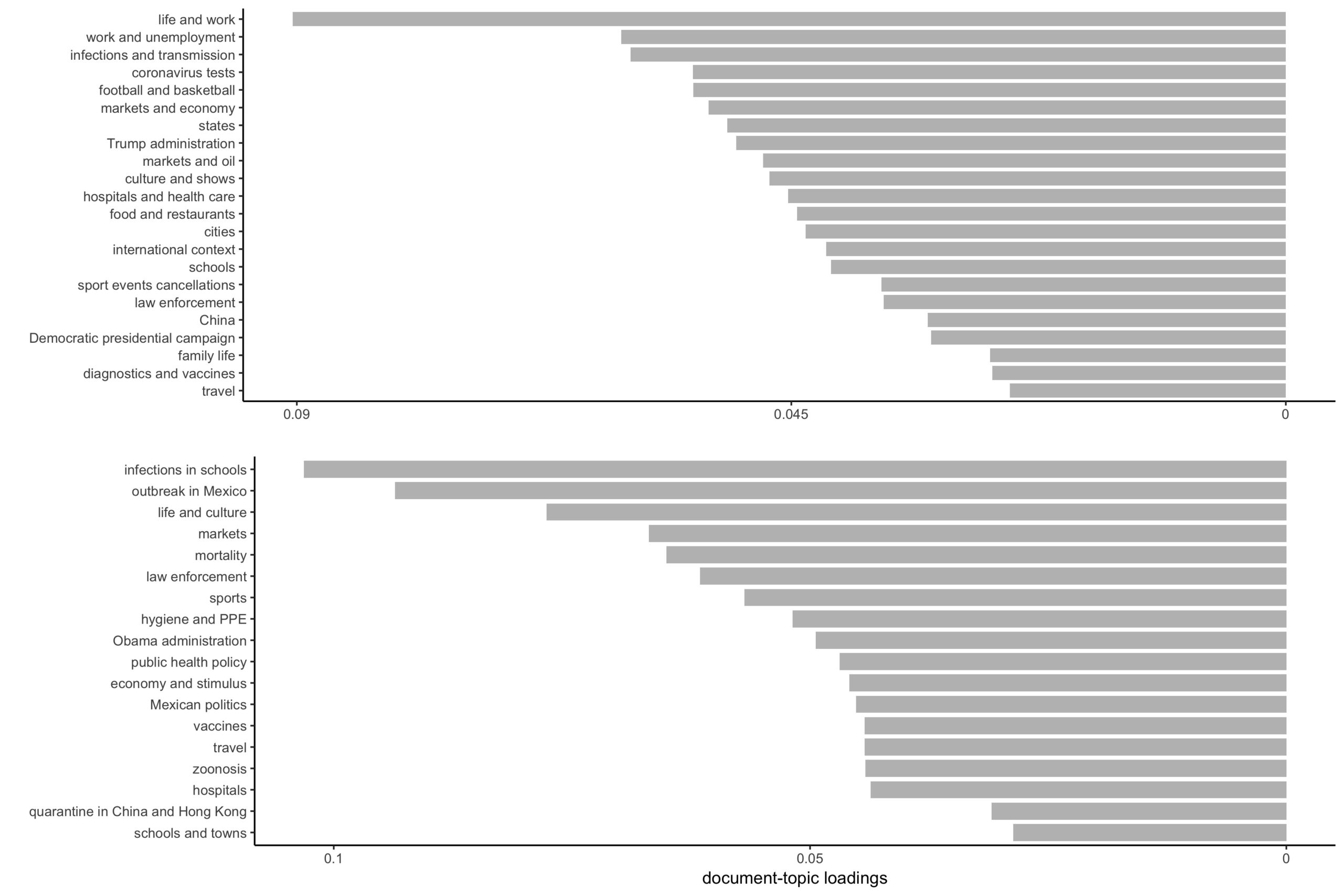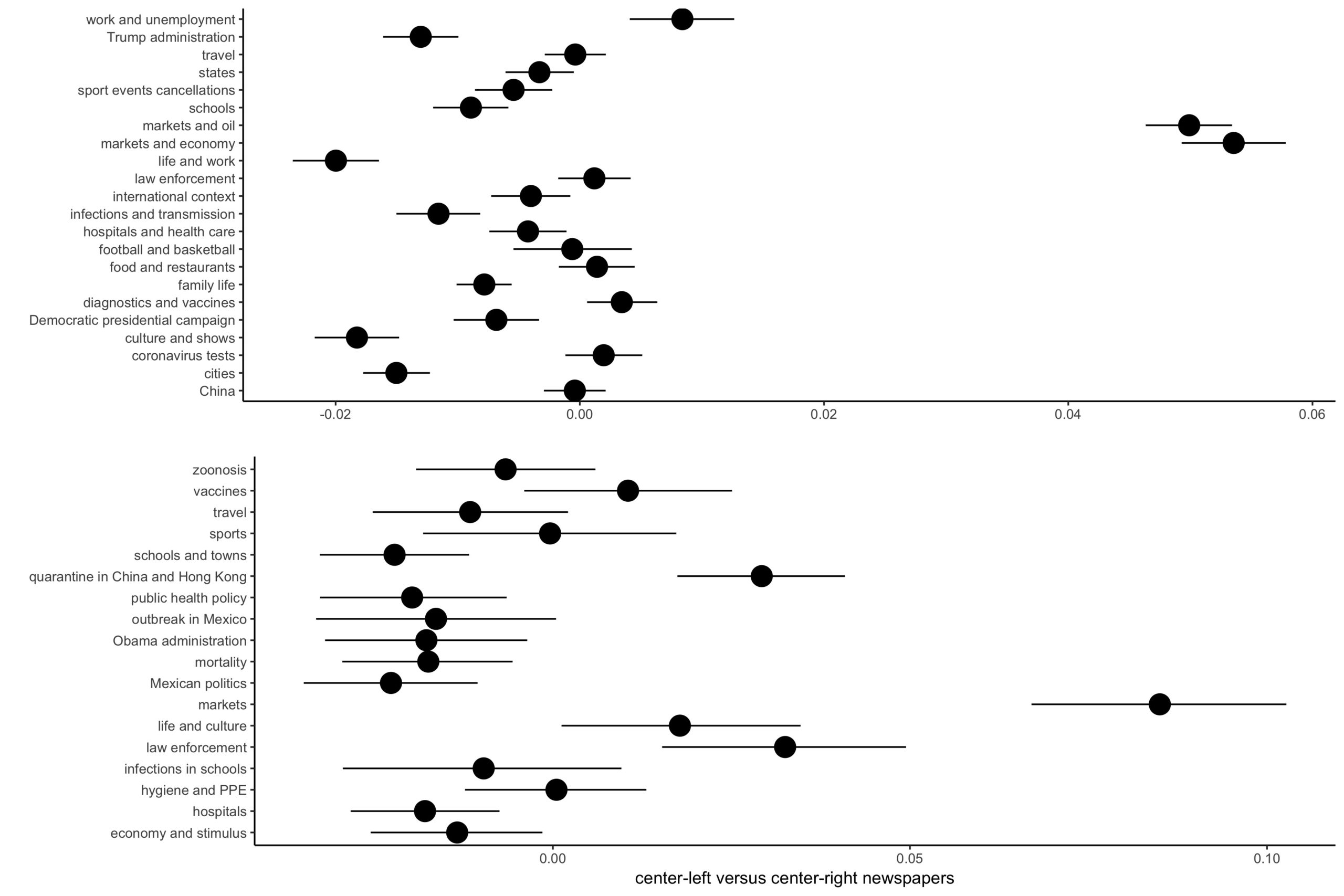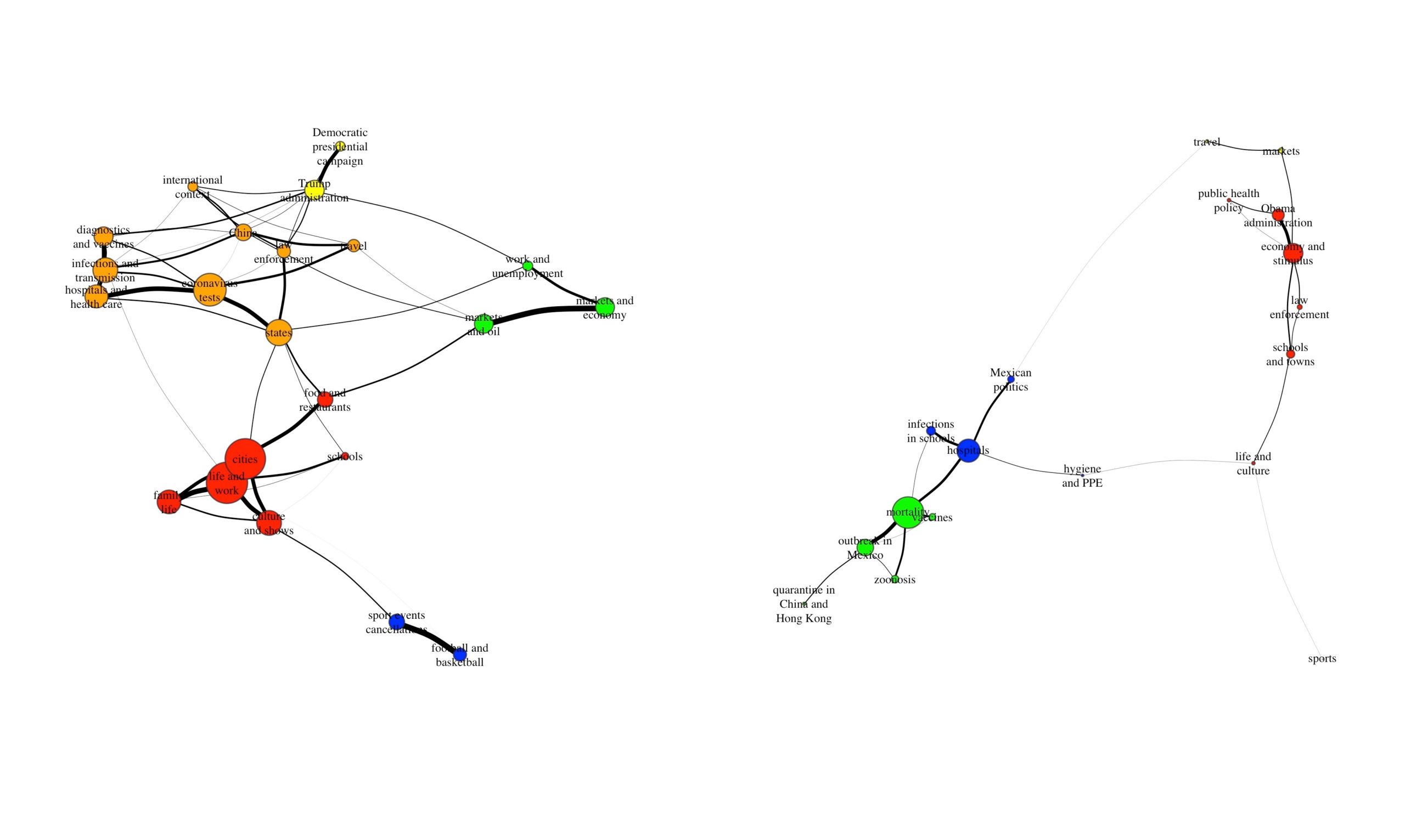
Dr Florian Rabitz is a senior researcher at KTU’s Faculty of Social Sciences, Arts and Humanities working on the global governance of environment and technology. More on Dr Rabitz here.
COVID-19 is a global media phenomenon that presently surpasses all other political, economic and other issues in international reporting. The role of the media in covering the pandemic has been scrutinized from various angles: in terms of accuracy, trustworthiness as well as its role for public risk communication. In our project, “A Topic-network Approach to the Mass Media Representation of Pandemic Threats”, we search for differences and commonalities in the media framing of COVID-19 and the 2009-2010 Swine Flu pandemic. Over time, the paths of those two public health emergencies have diverged, as it became increasingly apparent that COVID-19 is an epochal crisis whereas the Swine Flu will likely remain no more than a footnote in the history of the 21st century. To account for those diverging trajectories, we have sampled approximately 25000 US news articles from the early weeks of the two pandemics, applying various text mining techniques for systematic comparisons between the two crises.
Whereas COVID-19 and the associated governmental response measure do not find a lot of precedence in history, we find that its framing in the news media shows substantial similarities to the case of the swine flu. Using topic models to identify the key themes in media reporting, we find similar priority issues, such as impacts on sports, culture as well as private life, school closures, economic consequences, as well as vaccination and other medical responses.
 The figure above shows the relative dominance of such key themes for COVID-19 (top) and the Swine Flu (bottom). One key difference that emerges is the comparatively marginal role that China, the geographical source of the outbreak, plays in the news media. Whereas roughly 9% of reporting on the Swine Flu referred to Mexico (the epicentre of the outbreak), China contributes less than 3% to the media debate.
The figure above shows the relative dominance of such key themes for COVID-19 (top) and the Swine Flu (bottom). One key difference that emerges is the comparatively marginal role that China, the geographical source of the outbreak, plays in the news media. Whereas roughly 9% of reporting on the Swine Flu referred to Mexico (the epicentre of the outbreak), China contributes less than 3% to the media debate.
We also find that media framing along the centre-left to the centre-right axis is remarkably stable between COVID-19 and the Swine Flu. While centre-right sources emphasize economic impacts, centre-left sources focus on the social dimensions of the two pandemics. Despite the alleged polarization of the mass media during the past years, and their supposed transformation into ideological echo chambers, the effects of political orientation in media reporting are largely constant.
 The only crucial difference which we find between the two cases is in the broader structure of the discourse. The figure below maps the correlations between the key topics in media reporting on COVID-19 and the Swine Flu, thus visualizing the respective semantic network. In the case of the Swine Flu (right), we find that the discourse splits into two broader clusters that are only weakly connected to each other: one on policy, society and economics, the other on epidemiological aspects in an international context. While we find similar clusters for COVID-19 (left), these are more strongly connected with each other. This shows that reporting on COVID-19 tends to be more holistic, integrated and comprehensive, whereas reporting on the Swine Flu has been more narrow and specific. An additional difference that emerges here is that issues of vaccination and other pharmaceutical responses play a much more central role in the media discourse on COVID-19 than they did for the Swine Flu.
The only crucial difference which we find between the two cases is in the broader structure of the discourse. The figure below maps the correlations between the key topics in media reporting on COVID-19 and the Swine Flu, thus visualizing the respective semantic network. In the case of the Swine Flu (right), we find that the discourse splits into two broader clusters that are only weakly connected to each other: one on policy, society and economics, the other on epidemiological aspects in an international context. While we find similar clusters for COVID-19 (left), these are more strongly connected with each other. This shows that reporting on COVID-19 tends to be more holistic, integrated and comprehensive, whereas reporting on the Swine Flu has been more narrow and specific. An additional difference that emerges here is that issues of vaccination and other pharmaceutical responses play a much more central role in the media discourse on COVID-19 than they did for the Swine Flu.
 Considering the significant shifts of the past decade in media ecosystems, as well as the supposed turn towards “post-factual” politics in liberal democracies, the overall stability in the mass media representation of pandemics is remarkable. While this does not relieve us of the responsibility of critically probing the ways in which the media frame these and other crises, our findings highlight a greater degree of resilience and path dependence in news reporting than initially expected.
Considering the significant shifts of the past decade in media ecosystems, as well as the supposed turn towards “post-factual” politics in liberal democracies, the overall stability in the mass media representation of pandemics is remarkable. While this does not relieve us of the responsibility of critically probing the ways in which the media frame these and other crises, our findings highlight a greater degree of resilience and path dependence in news reporting than initially expected.
The project “A Topic-network Approach to the Mass Media Representation of Pandemic Threats (TOPNET)” is funded by Kaunas University of Technology Special Research, Development and Innovation Fund grant no. PP59/2016. The team comprises Florian Rabitz (project lead), Augustė Nalivaikė and Alin Olteanu.